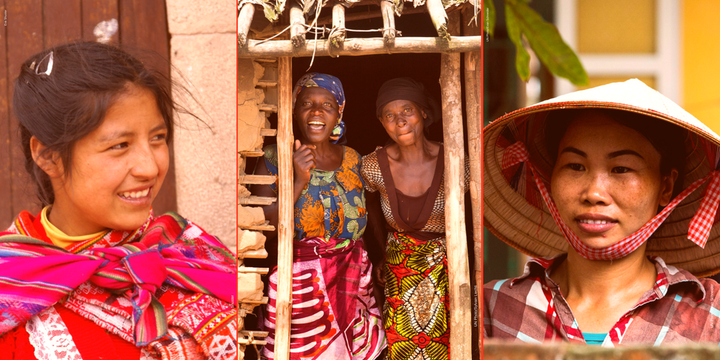
I wait. I compose myself. My self is a thing I must now compose, as one composes a speech. What I must present is a made thing, not something born.
A Handmaid’s Tale, Margaret Atwood
This month, Alliance 8.7, an initiative spearheaded by the International Labour Organization (ILO), announced in its new “Global estimates of modern slavery” report that 24.9 million people are trafficked for forced labor. The ILO is the United Nations entity tasked with setting labor standards around the world and promoting decent work universally. The images of children slaving in boats to catch the fish we eat, of men in fields to pick the coco leaves for our chocolate, or women stitching fabric for little or no pay for our discounted clothes haunt our consciousness. Millions of men, women and children are trafficked for labor, trapped in debt bondage and great suffering with rarely an escape in view.
The ILO’s valiant efforts to end labor trafficking and forced labor, including with its partners like Alliance 8.7, are critical and urgent. However, the wrinkle in the ILO’s estimates is that it collapses sex trafficking into labor trafficking, which are distinct crimes under the U.N. Trafficking Protocol. Furthermore, the ILO characterizes the exploitation of prostitution — an accepted term in international law — as forced labor, a categorization that would indicate that the sex trade is a viable employer. The report also aggregates all forms of human trafficking as “modern slavery,” a marketable lay term used to evoke the severity of human trafficking. Rare do sex trafficked and sexually exploited individuals, 96% of whom are women and girls, display to the naked eye signs of slavery as envisioned in our public imaginations. In our media-influenced minds, we weave tales of choice and agency when she wraps her legs around a strip club pole or a sex buyer’s waist, without questioning what enslavement, violence and coercion look like in abused and vulnerable women.
What does this all mean?
Margaret Atwood’s novel “The Handmaids’ Tale” pushes us into a world where Commanders, the highest-ranking men in the fictional Republic of Gilead, stratify women according to their socio-racial status and the state of their reproductive system. Every woman is objectified according to the Republic’s needs and its vision for the second sex. In an environment polluted by nuclear waste, Handmaids are the rare fertile women. Their assigned Commanders rape them every month for impregnation. The Commander’s barren Wives are superior to all women within the confines of systemic male oppression and abuse of power. The rebels become UnWomen; the women of color are shipped to contaminated Colonies; and the Jezebels are made sexually available to men in government-sanctioned brothels. For too many women in the real world, in particular women of color and from the global south, Atwood’s fictional fragments of dehumanization are reality.
One often erases something to create another. In the complex spheres of U.N. agencies, international law and the ideologies of governments when addressing human trafficking, the ILO appears determined to erase the reality that the vulnerabilities of women and girls are acutely heightened because of their sex. The multi-billion dollar sex trade banks on marginalized women and girls, overwhelmingly of color or from the global south. Women trafficked for forced labor, including in domestic servitude and the agricultural sector, are also at high risk of sexual exploitation and violence. What the ILO and its supporters are instead creating with their classification of sexual exploitation as forced labor is an Atwoodian global narrative for women and girls. Whether this is being done consciously or inadvertently is for the agency to confirm.
Member States gathered at the U.N. in New York this week to discuss human trafficking and reaffirm their commitments to the Global Plan of Action to Combat Trafficking in Persons, which will guide their national strategies, global research and the development of indicators to combat this human rights violation. If governments rely on the ILO’s figures, how will they address sex trafficking as distinct from labor trafficking? If they qualify the sex trade, including prostitution, as a job-creating sector, are Member States prepared to acknowledge pimps, brothel owners, pornographers and other exploiters as bona fide employers for women who suffer from lack of choices? Will they develop national plans of action that foster Gilead-like nation-states whose domestic profits depend on satiating male demand to guaranteed sexual access to women’s bodies?
“For eight years I was trafficked into strip clubs, brothels and on the streets of South Africa and it was never ‘work.’ It was part and parcel of our culture of rape,” said Grizelda Grootboom, who addressed the U.N. General Assembly on Wednesday as a survivor leader. ”My life didn’t look like sexual slavery, but it was, under the noses of the police and neighbors. Every sex buyer who bought me is responsible for the pain that plagues me every day.”
The ILO should encourage governments to invest equally in combating all forms of human trafficking. It should also take the opportunity to rectify its dangerous narrative of “prostitution as work” by clarifying their statistics on human trafficking and embracing international law. When, under human rights principles, is “forced” sexual exploitation — a term the ILO incomprehensibly cherishes – ever free and who decides? Survivors, governments and advocates must beat a loud drum to end the travesty that women’s bodies are items for sale. Merely hoping that they will do so is not enough. It’s a storyline worthy of the sex trade, not an agency of the United Nations.
